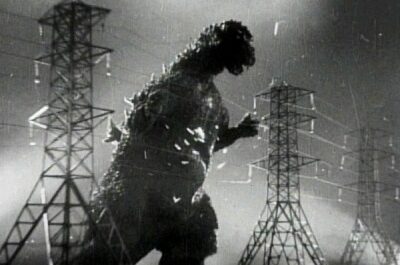Il dipinto originale del Botticelli, esposto nella Galleria Palatina agli Uffizi, parrebbe essere stato realizzato quindici anni prima di quello conservato nella chiesa di Saint Félix a Champigny-en-Beauce, nel dipartimento di Loir-et-Cher, un’opera a lungo inosservata in quanto ritenuta una copia realizzata nel XIX secolo.
L’ATTRIBUZIONE ALLO STUDIO DEL BOTTICELLI
Matteo Gianeselli, curatore della mostra, è stato il primo a richiamare l’attenzione sul dipinto di Champigny-en-Beauce, lo ha fatto nel corso delle ricerche da lui effettuate sui dipinti italiani conservati nelle collezioni pubbliche francesi. Egli ha così identificato nel pezzo un’opera originale del XVI secolo, realizzata nello studio di Botticelli a Firenze. I lavori di restauro sono stati coordinati dal DRAC Centre-Val de Loire e realizzati nei laboratori del Centre de Recherche et de Restauration des Musées de France (C2RMF). Nel biennio 2021-22 il Musée Jacquemart-André presentò l’opera nell’ambito di una mostra sul Botticelli Artist and Designer, assieme al prototipo fiorentino. La brillante intuizione del Gianeselli è stata successivamente confermata sia dall’esame critico svolto dagli storici dell’arte, che a seguito delle analisi scientifiche effettuate dal C2RMF sotto la direzione di Dominique Martos-Levif. L’attribuzione dell’opera allo studio del Botticelli ha consentito inoltre di classificare il dipinto nella categoria delle opere di interesse storico della municipalità di Champigny-en-Beauce.
ARTISTI ITALIANI NELLA VALLE DELLA LOIRA
Un’ulteriore versione della Vergine Maria col Bambino Gesù e San Giovanni Battista venne realizzata nello studio del Botticelli intorno al 1500. Attualmente appartiene al Barber Institute of Fine Arts di Birmingham, nel Regno Unito. Seppure simili, tuttavia le due opere presentano delle diversità. I dipinti esposti nella cappella del castello di Chambord evidenziano gli sviluppi compiuti nella tecnica pittorica, il funzionamento dello studio del Botticelli e la misura attraverso la quale gli artisti fiorentini realizzavano molteplici rappresentazioni della Sacra Famiglia. Infatti, il dipinto di Champigny si avvicina molto a quello fiorentino, malgrado la composizione risulti invertita, senza dubbio – si ritiene – a causa della tecnica di duplicazione a cui si fece ricorso. Inoltre presenta variazioni di fondo, quali l’esterno con cespuglio di rose e l’interno con ombra. L’unione di questi due dipinti riflette le influenze degli artisti italiani nella Valle della Loira, tra questi Leonardo da Vinci, la cui opera ha ispirato l’architettura di Chambord e la sua famosa scalinata a doppia elica.
DOMAINE NATIONAL DE CHAMBORD
Proprietà dello Stato francese dal 1930, il Domaine national de Chambord è un istituzione pubblica posto sotto l’alta protezione del Presidente della Repubblica e per il quale è competente l’autorità congiunta dei Ministeri dell’Agricoltura, della Cultura e dell’Ambiente. Con decreto del Consiglio di Stato del 1 giugno 2018, è stata stabilita una sinergia tra esso e il Grand Parc de Rambouillet. Il Consiglio di amministrazione è attualmente presieduto da Philippe Donnet, mentre dal gennaio del 2023 la direzione è stata affidata a Pierre Dubreuil. Da oltre cinquecento anni Chambord suscita ammirazione e fascino in tutto il mondo. Nel 1821 il monumento è stato aperto al pubblico. Inserito già nel 1840 nell’elenco dei monumenti storici di Francia, dal 1981 fa anche parte del patrimonio mondiale dell’Unesco. Chambord è una spettacolare costruzione rinascimentale. Delimitato da un muro perimetrale esteso per trentadue chilometri, il castello si trova immerso in una tenuta comprendente non meno di 5.440 ettari. Con un milione di presenze all’anno è il secondo castello più visitato in Francia.
INFO
Botticelli: Two Madonnas at Chambord
Exhibition from 20 October 2024 to 19 January 2025
Domaine national de Chambord
41250 Chambord
Accessible from Paris by the A10 freeway or Gare d’Austerlitz
Full price 16 € / Reduced price 13,50 €
Free for EU citizens under 26 years old

Botticelli, Two Madonnas at Chambord: October, 20 2024 – January, 19 2025. An unexpected treasure in the church of Saint Félix in Champigny-en- Beauce, the Virgin Mary, Infant Christ, and the young St. John the Baptist, initially dated as being 19th century, has recently been authenticated as an original 16th century piece from the studio of Italian painter Sandro Botticelli (1445-1510). It will be presented in the Chapel at Chambord from 19 October 2024 to 19 January 2025 alongside its model conserved in the Pitti Palace in Florence, exceptionally on loan from the Uffizi Gallery
Botticelli’s original painting, displayed in the Palatine Gallery at the Uffizi Galleries in Florence, seems to have been made fifteen years before the one conserved in the church of Saint Félix at Champigny-en-Beauce, in the Loir-et-Cher department. This work long went unnoticed as it was thought to be a 19th century copy.
THE ATTRIBUTION TO THE BOTTICELLI’S STUDIO
Curator Matteo Gianeselli was the first to draw attention to the painting at Champigny-en-Beauce during his research into Italian paintings conserved in French public collections. He identified the piece as an original 16th century work made in Botticelli’s studio in Florence. Restoration work was coordinated by the DRAC Centre-Val de Loire and carried out in workshops at the Centre de Recherche et de Restauration des Musées de France (C2RMF). In 2021-2022, the Musée Jacquemart-André presented the work in an exhibition titled Botticelli Artist and Designer, alongside the prototype from Florence. Matteo Gianeselli’s intuition was confirmed both by critical examination from art historians and scientific analyses made by the C2RMF under Director Dominique Martos-Levif. Attributing the piece to the Botticelli studio also allowed the painting to be classified under the Historic Monuments regime as the property of the commune of Champigny-en-Beauce.
ITALIAN ARTISTS IN THE LOIRE VALLEY
Another version of the Virgin Mary, Infant Christ, and St. John the Baptist was made in the Botticelli studio around 1500. It now belongs to the Barber Institute of Fine Arts in Birmingham, UK. Similar but different, the two paintings displayed in the chapel of the château at Chambord demonstrate developments in painting technique as well as the functioning of Botticelli’s studio and the extent to which artists in Florence created multiple representations of the Holy Family. The painting from Champigny is very close to the one in Florence, though the composition is reversed, no doubt on account of the duplication technique used, and shows background variation (outside with rose bush, inside with shadow). Bringing these two paintings together reflects the influences of Italian artists in the Loire Valley, including Leonardo da Vinci whose work inspired the architecture at Chambord and its famous double-helix stairway.
DOMAINE NATIONAL DE CHAMBORD
Property of the French state since 1930, the Domaine national de Chambord is an industrial and commercial public establishment placed under the high protection of the President of the Republic and under the joint authority of the French ministries of agriculture, culture and the environment. By dint of a state council degree dated 1 June 2018, the establishment has joined forces with the Grand Parc de Rambouillet. The Board of Directors is chaired by Philippe Donnet. Since January 2023, the public establishment has been directed by Pierre Dubreuil. For over 500 years, Chambord has aroused admiration and fascination throughout the world. Since 1821, the monument has been open to the public. Placed as early as 1840 in the initial list of historic monuments in France, listed as a Unesco World Heritage site since 1981, Chambord is one of the most breathtaking Renaissance constructions. Bounded by a 32km (20-mile) wall, the château is located in an estate containing no less than 5440 hectares. The second most visited castle in France, Chambord welcomes more than one million visitors per year.
INFO
Botticelli: Two Madonnas at Chambord
Exhibition from 20 October 2024 to 19 January 2025
Domaine national de Chambord
41250 Chambord
Accessible from Paris by the A10 freeway or Gare d’Austerlitz
Full price 16 € / Reduced price 13,50 €
Free for EU citizens under 26 years old








